Is Skin Bleaching Safe? Are There Any Safer Ways To Brighten Skin?
Learn how bleaching affects your skin and alternative methods to get naturally glowing skin.
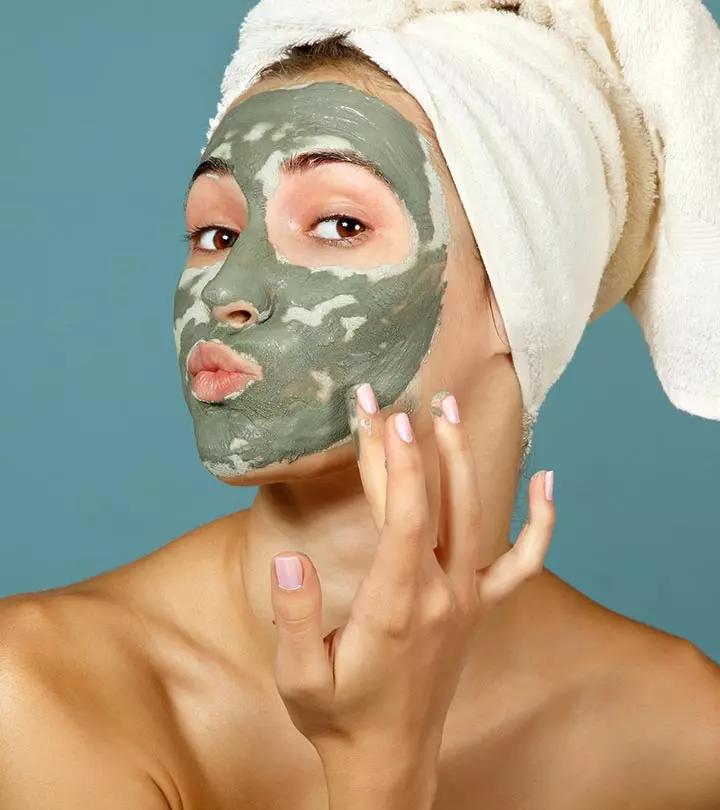
Image: Shutterstock
Bleaching is an effective way to minimize the appearance of dark patches, uneven skin tone, and blemishes. You can easily do it at home using skin bleaching creams if you know how to bleach your skin safely and what precautions to follow. While bleaching can give you instant results, you must be careful about its usage.
Factors like pollution and excessive sun exposure may lead to increased melanocytes in your skin, making it appear dull and causing pigmentation, tanning, and skin discoloration. Bleaching can help minimize these common issues and make your skin appear brighter and even. However, chemical bleaches contain strong ingredients that can damage the skin if you use them excessively.
Therefore, it is better to ditch the chemical bleaches and try natural remedies to brighten your skin. These ingredients are safe for the skin and will not irritate it. This article explains why you should avoid chemical bleaches, their risks, and natural ways to bleach your skin at home without any damage. Read on to know more.
 Did You Know?
Did You Know?In This Article
Is Bleaching Safe For Skin?
No. Absolutely not.
According to statistics, there is an unhealthy obsession with “fair” skin, especially among African and Asian women. UN data says that 40% of African women bleach their skin (1). By 2024, the market of skin-lightening and whitening products is estimated to be worth $31.2 billion (2). However, little do you realize that you are actually damaging your skin by using chemical bleaches. Skin bleaching may cause serious skin complications. Therefore, you need to know the risks and side effects before you try out any bleaching agent.
Key Takeaways
- Excessive sun and pollution exposure can cause uneven tanning and hyperpigmentation.
- Skin bleaching may cause mercury poisoning and steroid acne.
- Milk, yogurt, tomatoes, carrots, and papaya are a few ingredients that can help brighten your skin.
- Massaging your face with turmeric and milk cream may reduce tan and dark spots.
Risks And Side Effects Of Using Chemical Skin Bleaching Agents
Chemical bleaches – including whitening soaps, creams, and lotions – contain chemicals, such as hydroquinone, mercury (Hg), and steroids, which can cause serious side effects like (3):
- Mercury poisoning
- Dermatitis (skin inflammation such as rashes, itching, redness, and blisters)
- Exogenous ochronosis (blue-black pigmentation)
- Steroid acne (red, painful bumps, whiteheads, and blackheads)
- Nephrotic syndrome (a type of kidney disorder where the blood vessels in the kidneys are damaged)
In the same study, the researchers pointed out that hydroquinone might trigger DNA damage and immunosuppressive responses (reduction in the efficacy or activity of your immune system)
. They also drew attention to the potential of increased vulnerability to skin cancer caused by any changes in the melanin production in people who bleach their skin, especially if they live in tropical areas with strong UV radiation. They concluded that more studies are required to establish a direct connection. However, hydroquinone is used as a treatment modality in some countries, but only under the strict supervision of a doctor.
Christabel, a blogger, shared her experience meeting a woman who had over-bleached her skin. She writes, “I recall an encounter with an elderly woman who had bleached her skin to the point where it displayed multiple colors—black, green, and a strange blueish pink upon closer inspection (i).” She felt sorry for the woman and suggested using organic products like tomatoes and avocado to heal the skin.
How To Treat Skin That Is Damaged From Bleaching Cream
Skin damaged from bleaching cream requires gentle care to ensure healing and speedy recovery. You can follow some of the steps below to help your skin recover:
- Cleanse Gently: Use a mild, fragrance-free cleanser to wash your face. Avoid harsh scrubs or exfoliants that can aggravate the skin.
- Moisturize: Apply a gentle, hypoallergenic moisturizer containing soothing ingredients such as aloe vera or hyaluronic acid to keep the skin hydrated.
- Sun Protection: Protect your skin from UV damage by wearing sunscreen with SPF 30 or higher for best results.
- Avoid Harsh Chemicals: Stay away from harsh skin care products, including other skin-lightening creams as they can worsen the condition.
- Consult A Dermatologist: If the damage is extensive or not improving, seek professional advice. They can provide ointments and topical medicines suitable for your skin type and condition.
Christabel also shared how her mother taught her that healthy skin is beautiful. She recounts, “Growing up, my mother taught me the importance of caring for my skin, especially because I have a sensitive complexion. She instilled in me the belief that hydrated and healthy skin radiates true beauty, regardless of external factors.”
You should not be bothered about your complexion as long as you have healthy skin. However, we understand that the blemishes, spots, and pigmentation can be bothersome for you. You may try using natural home remedies to minimize the spots and blemishes and brighten your skin. These DIY skin-brightening agents may not erase your blemishes completely or have an intense skin whitening or bleaching effect, but they will not harm your skin (unless you are allergic to any of the ingredients) and keep it healthy and bright. Check them out.
Skin Bleaching: DIY Home Remedies To Brighten Your Skin Naturally
Natural remedies for skin brightening are a safer alternative to harsh chemical bleaching agents. While these options may take time to show results, they can help improve your skin tone over time without the potential side effects linked to chemicals. Though they won’t provide an intense bleaching effect, they can contribute to a brighter complexion. Here are some natural skin-lightening remedies you can try:
1. Yogurt

Yogurt (and other milk products) contains lactic acid that helps in skin lightening (4). Also, a yogurt face mask benefits your skin and delivers a calming effect.
Take a tablespoon of yogurt and add a pinch of turmeric to it. Apply the paste on your skin and leave it on for 15-30 minutes before washing. Follow this routine once daily.
 Quick Tip
Quick TipYou can also add honey to your yogurt and turmeric paste to help moisturize your skin.
2. Lemon
Lemon contains vitamin C that inhibits melanin formation and has a depigmenting effect
(5). However, avoid this remedy if you have sensitive skin as it can cause redness and irritation. Also, lemon makes the skin photosensitivei Extreme sensitivity to ultraviolet (UV) rays leading to painful sunburn in case of prolonged exposure to the sun. . Apply sunscreen before stepping out after using this remedy.
Dilute a tablespoon of lemon juice with distilled water and apply it on your face as a toner. Wash it off after 10-15 minutes.
3. Milk
Milk contains lactic acid that has a skin-lightening effect (4).
Mix a teaspoon of honey in a tablespoon of raw milk and spread it on your face using a cotton ball. Leave it on for 15-30 minutes and wash off. Follow this routine once a day.
4. Tomato
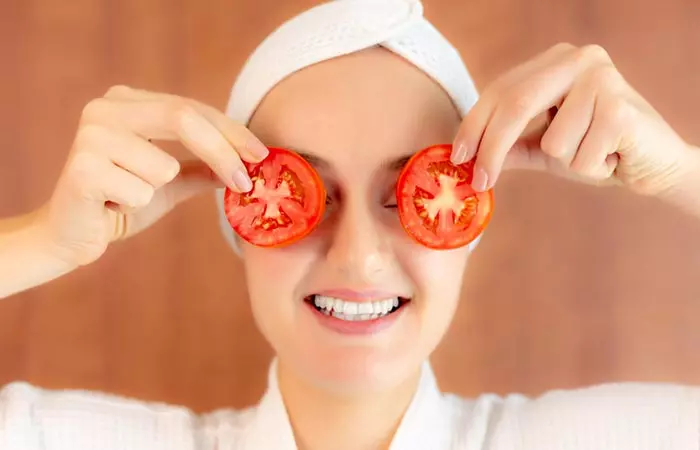
Eating tomatoes can safeguard you from the damaging effects of UV rays (6). There is no scientific proof of its brightening effect on the skin upon topical application, but it is commonly used as a home remedy for skin brightening. You may add tomatoes to your daily diet or use the following home remedy.
Mix a tablespoon of tomato paste with a pinch of turmeric and a bit of milk. Apply it to your face and wash it off after 20-30 minutes. Repeat this routine three times a week.
5. Gram Flour
Gram flour (or besan)
is one of the most commonly used ingredients for its beauty benefits. It exfoliates and cleanses your skin thoroughly to brighten your skin tone. It also helps reduce tan and oiliness (7).
To use gram flour for skin brightening, mix a tablespoon of gram flour with rose water and apply the paste on your skin. Let it dry before washing it off. Use this remedy thrice a week.
6. Turmeric
Turmeric has exceptional wound-healing and antiseptic properties, which is why it is commonly used in Ayurvedic preparations to treat a number of skin ailments. Turmeric can help reduce pigmentation, dark spots, and uneven skin tone to give you bright and glowing skin (7).
Mix half a teaspoon of turmeric with milk cream and massage it on your skin. Let it dry before washing it off. Follow this remedy once daily.
7. Sandalwood (Shwet Chandan or White Sandalwood)

White sandalwood face pack is used to cure skin allergies. It also has a cooling and soothing effect on the skin. White sandalwood powder is especially beneficial in reducing the appearance of scars and acne marks to give you a brighter skin tone (7).
Mix a teaspoon of white sandalwood powder with a teaspoon of honey and apply the paste on your skin. Wash it off after 20 minutes. Follow this routine thrice a week.
8. Saffron
Saffron
contains carotenoid glycosidesi Compounds in which one or more sugars combine with non-sugar molecules held together by oxygen or nitrogen. and terpenoidsi Naturally occurring chemical compounds in almost all living organisms, and a significant component of essential oils. . It lightens and brightens your skin to give you a clear complexion and youthful glow (7).
Soak a pinch of saffron strands in raw milk and apply the mixture with a cotton ball. Wash it off after 30 minutes and follow this routine once daily.
9. Potato
is one of the most common DIY remedies for skin issues. There is no scientific study that proves any skin benefit of topical application of potato. However, many people have used potato and found it beneficial for dark circles, blemishes, and skin brightening.
Mix potato juice with a few drops of lemon juice and honey. Apply the mixture on your skin and wash it off after 15-20 minutes. Follow this routine 2-3 times a week.
 Quick Tip
Quick TipYou can substitute potato juice with potato slices. Cut your potato into thin slices and wet them with water. You can place the slices over the affected areas for 10 to 15 minutes. Do this two to three times a week.
10. Egg Whites
There are no studies that prove the skin brightening effect of egg whites. Many people use raw egg whites on their skin as they found it to have a brightening effect. However, it is not advisable to apply raw egg on the skin as it may contain salmonella.
If you want to use egg whites on your face, mix it with a teaspoon of virgin olive oil and lemon juice and apply it as a face mask. Wash it off once it dries.
11. Papaya

Papaya contains vitamin C and carotenoidsi Natural plant pigment responsible for the yellow, orange, and red color of vegetables and fruits, such as carrots, tomatoes and mandarin. that can reduce pigmentation and prevent redness when you consume them (5), (8). However, many people use papaya on the skin to fade their marks, spots, and blemishes.
You can try it by mixing mashed ripe papaya with a teaspoon of diluted lemon juice and applying it on your skin. Use this remedy once every alternate day.
12. Strawberry
Strawberry
also contains vitamin C that has depigmenting properties (5). However, its topical benefits have not been proven.
You can use strawberry to create a fruity face pack. Mash a few strawberries and mix them with milk. Apply the paste on your face. Wash it off after it dries. Follow this home remedy once daily.
13. Licorice
Licorice may clear up and brighten your skin. It reduces excessive melanin production and distributes it evenly throughout your skin to reduce hyperpigmentation. It also prevents UVB-induced pigmentation. However, more research is required to prove its depigmenting effects (9).
You can mix licorice powder with sandalwood powder and rose water, then apply the paste on your skin twice or thrice a week.
14. Carrot
Carrot contains lycopenei Plant nutrients responsible for red to pink pigmentation in fruits and vegetables, notably in tomatoes. and carotenoidsi Natural plant pigment responsible for the yellow, orange, and red color of vegetables and fruits, such as carrots, tomatoes and mandarin. that can help reduce UV-induced redness and sunburn (8). Anecdotal evidence also suggests that it can help reduce blemishes and even out the skin tone to improve its appearance. Though it takes a lot of time and regular application, the carrot is also said to be rejuvenating for all skin types.
Mix carrot paste with yogurt and a few drops of lemon juice and apply it on your skin. Use this remedy once daily.
15. Oatmeal

Oatmeal is widely used in cosmetics and skincare products for its skin benefits. Its texture makes it an excellent exfoliant that removes dead skin cells (10). Oatmeal is also said to protect your skin from the damaging effects of UV rays, such as tanning, dark spots, and age spots (11). However, the efficacy of oatmeal on skin needs further research.
To use oatmeal, mix ground oatmeal with milk and massage it on your face. Wash it off once it is dry.
These remedies can help with hyperpigmentation and uneven skin tone to an extent. Before trying any of these remedies, it’s important to do a patch test to ensure you’re not allergic to any of the ingredients. And if you have excessively patchy skin, do consult a dermatologist to learn about alternative cosmetic or laser treatments.
Infographic: Most Effective Ways To Bleach Your Skin Naturally
Bleaching your skin can help remove dark spots, tan, and blemishes. In addition, it will help improve your skin tone and lighten your skin color. Though we have already discussed all the natural ingredients you can use to bleach at home, you may also want to check out the infographic below to know the most effective ones among the lot. Illustration: StyleCraze Design Team
In the face of unrealistic beauty standards across the globe, inconsistent skin pigmentation can cause low self-esteem in many individuals. Excessive exposure to the sun and pollution lead to uneven patches, tanning, and hyperpigmentation. Many people do not like using chemical skin bleaching agents as they can result in dermatitis, acne, or mercury poisoning. Using organic ingredients such as milk, yogurt, tomatoes, carrot, papaya, or gram flour twice a week may brighten your skin over time. That is why following these tips on how to bleach your skin safely at home with these natural ingredients may minimize the appearance of these issues and give you brighter skin.
Frequently Asked Questions
At what age should you bleach your face?
According to Dr. Anna Chacon, a double board-certified dermatologist and a Fellow of the American Academy of Dermatology, says “After age 20, you should bleach your face because your skin would have matured, and no new changes will occur. As a result, the skin would be better able to withstand bleach.
Can we use a scrub after bleach?
Dr. Chacon says, “After bleaching, avoid using a face scrub or a face pack for at least a week. Use a moisturizing cream. Avoid keeping the skin dry. Do not use hot water.
Does bleaching remove dark circles?
According to Dr. Chacon, “Skin bleaching can help reduce the appearance of dark circles, especially if they are caused due to hyperpigmentation in the skin’s surface layers.
What can I use to bleach my skin?
You may use commercial bleaching agents but they can damage your skin. It is better to use natural ingredients to brighten your skin. You can also add Kojic acid and glycolic acid in your skin care routine for exfoliation and subsequent brightening. You may go for an over-the-counter chemical peel once a week for a gradual improvement in skin complexion and texture.
How to bleach skin naturally?
Natural ingredients can only help brighten your skin and may not give the same results as chemical bleaching agents. You may use skin care products with ingredients such as Vitamin C, retinoids, kojic, azelaic, or glycolic acid that function as melanin inhibitors, thereby aiding in brightened skin tone.
Can you permanently bleach your skin?
No, the results of chemical and natural skin brightening treatments are temporary.
How long does skin bleaching last?
Depending on the type of treatment, anecdotal reports suggest that the results can last anywhere from a few months to a couple of years.
Do skin bleaching pills work?
Possibly not. While the pills might be deemed safe to consume, the skin-brightening results vary and are not noticeable. They are not backed by sufficient scientific evidence either.
How can you tell if someone is bleaching their skin?
If their skin tone is uneven, some parts tend to tan quickly while others remain light, and if they tend to have darker knuckles (since this part is difficult to lighten), the person may have undergone a skin bleaching procedure.
Illustration: How To Bleach Your Skin At Home – 15 Ways To Lighten Your Skin Naturally

Image: Stable Diffusion/StyleCraze Design Team
Bleaching your skin can cause serious damage, including dryness, irritation, and discoloration. Check out this informative video for more information!
Personal Experience: Source
StyleCraze's articles are interwoven with authentic personal narratives that provide depth and resonance to our content. Below are the sources of the personal accounts referenced in this article.
i. The beauty of your skin: Say no to skin bleaching
https://bellaangeldouglas.medium.com/the-beauty-of-your-skin-say-no-to-skin-bleaching-b3973f3db11
References
Articles on StyleCraze are backed by verified information from peer-reviewed and academic research papers, reputed organizations, research institutions, and medical associations to ensure accuracy and relevance. Read our editorial policy to learn more.
- Paying A High Price For Skin Bleaching, (2019), Africa Renewal, The United Nations.
https://www.un.org/africarenewal/magazine/april-2019-july-2019/paying-high-price-skin-bleaching - Skin Color, Cultural Capital, and Beauty Products: An Investigation of the Use of Skin Fairness Products in Mumbai, India, Frontiers in Public Health, US National Library of Medicine, National Institutes of Health.
https://www.ncbi.nlm.nih.gov/pmc/articles/PMC5787082/ - Skin Bleaching and Dermatologic Health of African and Afro-Caribbean Populations in the US: New Directions for Methodologically Rigorous, Multidisciplinary, and Culturally Sensitive Research, Dermatology And Therapy, Springer Open, US National Library of Medicine, National Institutes of Health.
https://www.ncbi.nlm.nih.gov/pmc/articles/PMC5120641/ - Lactic Acid, Sodium Lactate, and Potassium Lactate: Handling/Processing, Agricultural Marketing Service, United States Department of Agriculture.
https://www.ams.usda.gov/sites/default/files/media/Lactic%20Acid%20TR%202015.pdf - Vitamin C in dermatology, Indian Dermatology Online Journal, US National Library of Medicine, National Institutes of Health.
https://www.ncbi.nlm.nih.gov/pmc/articles/PMC3673383/ - Tomato paste rich in lycopene protects against cutaneous photodamage in humans in vivo: a randomized controlled trial, The British Journal of Dermatology, US National Library of Medicine, National Institutes of Health.
https://pubmed.ncbi.nlm.nih.gov/20854436/ - “In-House Preparation and Standardization of Herbal Face Pack, (2017) The Open Dermatology Journal, Bentham Open.
https://www.semanticscholar.org/paper/In-House-Preparation-and-Standardization-of-Herbal-Pal-Pal/e47d35a89c587c622323b5a7fc4e30f55d5be6df?p2df - Discovering the link between nutrition and skin aging, (2012), Dermatoendocrinology, US National Library of Medicine, National Institutes of Health.
https://www.ncbi.nlm.nih.gov/pmc/articles/PMC3583891/ - Cosmeceuticals for Hyperpigmentation: What is Available?, Journal of Cutaneous and Aesthetic Surgery, US National Library of Medicine, National Institutes of Health.
https://www.ncbi.nlm.nih.gov/pmc/articles/PMC3663177/ - Why Should You Exfoliate Your Face?, Montana Academy.
https://montanaacademy.edu/why-should-you-exfoliate-your-face/ - Oatmeal in dermatology: a brief review., (2012), Indian Journal Of Dermatology, Venereology, and Leprology, US National Library of Medicine, National Institutes of Health.
https://pubmed.ncbi.nlm.nih.gov/22421643/
Read full bio of Dr Jovana Majstorovic
- Dr. Anna Chacon, MD, FAAD, is a double board-certified dermatologist with over 7 years of experience. She has authored many peer-reviewed articles and managed clinical research studies during her fellowship. She completed her medical school in the PLME (Program of Liberal Medical Education) at Brown University.
 Dr. Anna Chacon, MD, FAAD, is a double board-certified dermatologist with over 7 years of experience. She has authored many peer-reviewed articles and managed clinical research studies during her fellowship. She completed her medical school in the PLME (Program of Liberal Medical Education) at Brown University.
Dr. Anna Chacon, MD, FAAD, is a double board-certified dermatologist with over 7 years of experience. She has authored many peer-reviewed articles and managed clinical research studies during her fellowship. She completed her medical school in the PLME (Program of Liberal Medical Education) at Brown University.
Read full bio of Ramona Sinha
Read full bio of Anjali Sayee
Read full bio of Shiboli Chakraborti










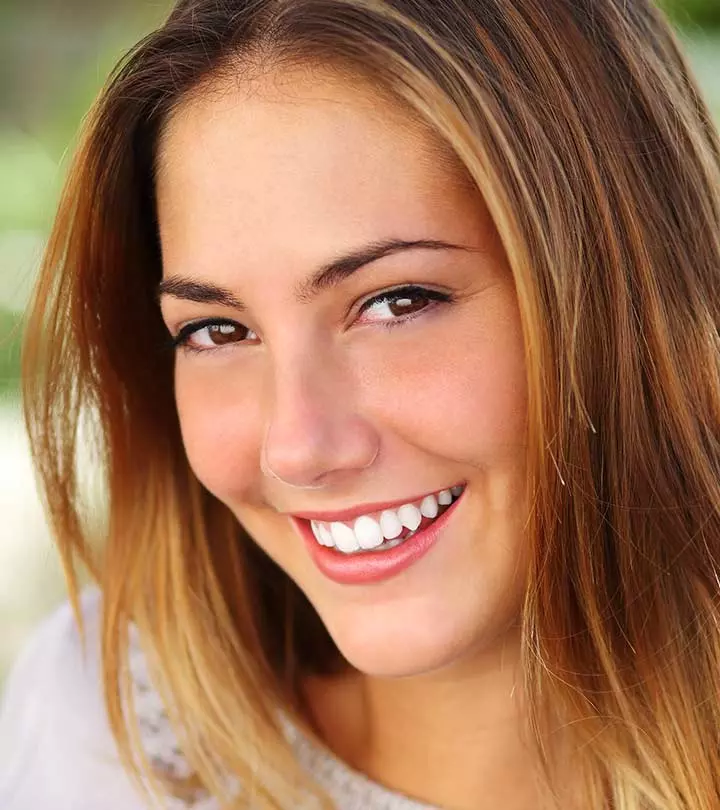













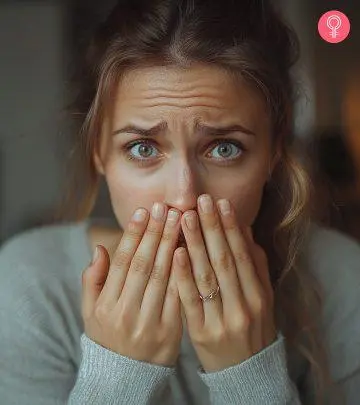
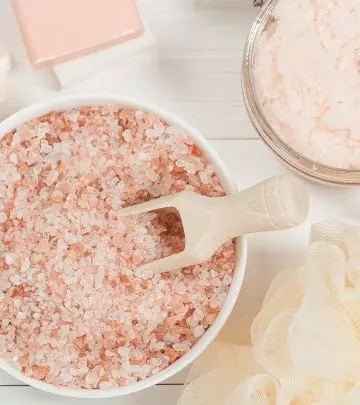

Community Experiences
Join the conversation and become a part of our empowering community! Share your stories, experiences, and insights to connect with other beauty, lifestyle, and health enthusiasts.